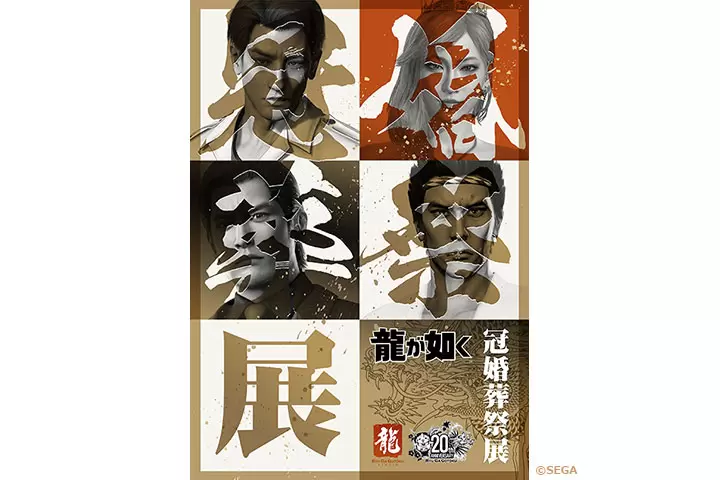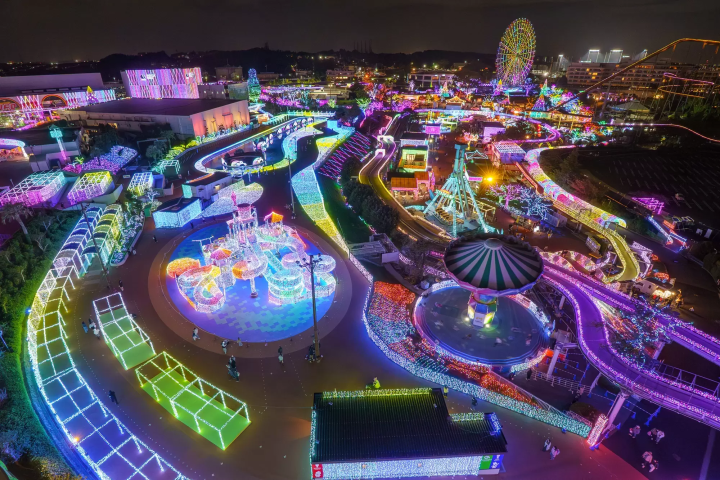[Yamanashi] What are the Fuji Five Lakes? What are the characteristics of each of the Fuji Five Lakes? What kind of place?
![[Yamanashi] What are the Fuji Five Lakes? What are the characteristics of each of the Fuji Five Lakes? What kind of place?](https://resources.matcha-jp.com/resize/720x2000/2023/06/22-139789.webp)
What kind of place is the Fuji Five Lakes? We would like to introduce the characteristics of each of the Fuji Five Lakes and the sightseeing spots around the Fuji Five Lakes that you absolutely cannot miss if you are visiting Mt. Fuji area.
The Fuji Five Lakes is a Component Parts of World Heritage for five lakes located in Yamanashi Prefecture, north of Mt. Fuji: Lake Kawaguchiko, Lake Motosuko, Lake Shojiko, Lake Saiko, Lake Yamanakako. Since ancient times, it has been depicted in many works of art as a place of scenic beauty, and has played an important Component Parts of World Heritage in Mt. Also, because it is easily accessible from Tokyo by bus or train in about 90 minutes, it is crowded with many tourists as a base for sightseeing in Mt. Fuji. This time, We would like to introduce the attractions of the Fuji Five Lakes, a must-see sightseeing spot when visiting Mt. Fuji area.
What are the Fuji Five Lakes?
![[Yamanashi] What are the Fuji Five Lakes? What are the characteristics of each of the Fuji Five Lakes? What kind of place?](https://resources.matcha-jp.com/resize/720x2000/2023/06/22-139761.webp)
Fuji Five Lakes is a general term for five lakes in Yamanashi Prefecture, north of Mt.Fuji. It used to be two large lakes, "Utsuko" and "Senoumi", but it is said that the repeated eruptions of Mt.Fuji. Lake Utsuko is said to be present-day Lake Yamanakako and Lake Ko - Oshinoko (Oshino Hakkai), and Senoumi is said to be present-day Lake Motosuko , Lake Saiko, and Lake Shojiko. It is said that it was the same lake. It has long been believed that the Fuji Five Lakes are filled with spring water from Mt. Fuji. In recent years, however, research by the Yamanashi Prefectural Mt.Fuji research institute, Since it contains almost no vanadium, which is the most characteristic feature of Mt. Fuji spring water, it is thought that the water of the Fuji Five Lakes is not Mt. Fuji. It has become It has become increasingly speculated that the rain and melted snow on the opposite mountainsides could be the source of water.
Characteristics of each of the Fuji Five Lakes
Lake Kawaguchiko
![[Yamanashi] What are the Fuji Five Lakes? What are the characteristics of each of the Fuji Five Lakes? What kind of place?](https://resources.matcha-jp.com/resize/720x2000/2023/06/22-139762.webp)
Lake Kawaguchiko is widely known as a tourist destination, with hotels, inns, and souvenir shops lining the shores of the lake. At an altitude of 830m, it is the lowest of the Fuji Five Lakes, and the surrounding distance is the longest of the Fuji Five Lakes at 17.4km. It is a scenic spot that appears in Matsuo Basho's haiku and Katsushika Hokusai's Thirty-six Views of Mount Fuji. You can enjoy the beautiful scenery of each season, such as cherry blossoms in spring and autumn leaves in autumn, as well as upside-down Mt. Fuji reflected on the surface of the lake. It is also a famous place nationwide as a mecca for black bass fishing.
Lake Motosuko
![[Yamanashi] What are the Fuji Five Lakes? What are the characteristics of each of the Fuji Five Lakes? What kind of place?](https://resources.matcha-jp.com/resize/720x2000/2023/06/22-139764.webp)
Lake Motosuko is the deepest lake (with a maximum depth of 121.6m) among the Fuji Five Lakes and is known for having the highest transparency among the lakes in Honshu. The view from the Nakanokura Pass observatory, which is famous as the model for the inverted Mount Fuji depicted on the back of the 1,000 yen banknote, is breathtaking. The autumn foliage is particularly stunning. In winter, it is also renowned as a mecca for fishing kokanee salmon.
Lake Shojiko
![[Yamanashi] What are the Fuji Five Lakes? What are the characteristics of each of the Fuji Five Lakes? What kind of place?](https://resources.matcha-jp.com/resize/720x2000/2023/06/22-139765.webp)
Lake Shojiko is the smallest lake among the Fuji Five Lakes, with an area of 0.8 square kilometers and a circumference of only 4.4 kilometers. It is famous for its picturesque view of "Kodaki Fuji," where Mount Fuji appears to embrace the nearby volcanic mountain called Oomuroyama. Visitors can enjoy fishing for crucian carp (herabuna) and engage in canoeing activities.
Lake Saiko
![[Yamanashi] What are the Fuji Five Lakes? What are the characteristics of each of the Fuji Five Lakes? What kind of place?](https://resources.matcha-jp.com/resize/720x2000/2023/06/22-139766.webp)
A mysterious lake surrounded by the Aokigahara Jukai. In 2010, kunimasu, which was thought to be extinct 70 years ago, was discovered by Sakana-kun, an entertainer and university professor. In addition, the lava cave called bat cave in Aokigahara Jukai, which spreads to the southwest, is the largest at the foot of Mt. Fuji and is designated as a national natural monument.
Lake Yamanakako
![[Yamanashi] What are the Fuji Five Lakes? What are the characteristics of each of the Fuji Five Lakes? What kind of place?](https://resources.matcha-jp.com/resize/720x2000/2023/06/22-139767.webp)
It is the largest of the Fuji Five Lakes (6.57 square kilometers in area) and the closest lake to Mt. Fuji (982m above sea level). The dome boat, where you can comfortably enjoy smelt fishing regardless of the weather or climate, is a winter tradition, and water sports and leisure activities are also popular. Many photographers and tourists visit from the end of October to February as a sacred place for Diamond Fuji.
Recommended sightseeing spots around Fuji Five Lakes
□ Around Lake Kawaguchiko □■
1 Oishi Park/Hana Terrace
![[Yamanashi] What are the Fuji Five Lakes? What are the characteristics of each of the Fuji Five Lakes? What kind of place?](https://resources.matcha-jp.com/resize/720x2000/2023/06/22-139768.webp)
It is a park facing Lake Kawaguchi on the northern shore of Lake Kawaguchiko. It is a park where you can see Mt. Fuji, Lake Kawaguchiko and lavender in summer, and Mt. Fuji, Lake Kawaguchiko and Kochia in autumn. The Herb Festival is held from late June to mid-July every year, and is bustling with people every day.
In addition, in the "Fuji Oishi Hana Terrace" adjacent to Oishi Park, there are fashionable shops where you can enjoy shopping and dining.
Kawaguchiko Herb Festival
Period: June 24, 2023 to July 17
Hours: 9:00-17:00
Click here for details → Lake Kawaguchiko Herb Festival
2 Kawaguchi Asama-jinja Shrine
![[Yamanashi] What are the Fuji Five Lakes? What are the characteristics of each of the Fuji Five Lakes? What kind of place?](https://resources.matcha-jp.com/resize/720x2000/2023/06/22-139769.webp)
This shrine was built in 865 to enshrine Asama no Okami, the god of Mt.Fuji. In the precincts, there are "Seven cedar trees" that are over 1,200 years old, and all seven are designated as natural monuments of Yamanashi Prefecture. In addition, two of the seven cedars are lined up and are popular as "marriage cedars".
The traditional performing art "Chigo no Mai", which is said to have originated as an offering to calm the eruption of Mt. Fuji, is designated as an important intangible cultural property of the country.
3 Kawaguchiko Northern Shore Area
![[Yamanashi] What are the Fuji Five Lakes? What are the characteristics of each of the Fuji Five Lakes? What kind of place?](https://resources.matcha-jp.com/resize/720x2000/2023/06/22-139771.webp)
In the northern shore of Lake Kawaguchiko , there are cherry blossom festivals in spring and autumn leaves festivals in autumn. There are many sightseeing spots in this area, such as the Music and Forest Museum , the Monkey Tour Theater, and the Itchiku Kubota Art Museum. Also, from the Lake Kawaguchiko North Shore Walking Trail, you can see a superb view of Mt. Fuji and Lake Kawaguchiko.
4 Fuji Subaru Land
![[Yamanashi] What are the Fuji Five Lakes? What are the characteristics of each of the Fuji Five Lakes? What kind of place?](https://resources.matcha-jp.com/resize/720x2000/2023/06/22-139772.webp)
Fuji Subaru Land is a theme park surrounded by the nature of Mt. Fuji. At the attraction "Nature Experience Base Donguri Course", which was created using the natural forest, you can cross the suspension bridge to climb up to the tree house built on the tree, and enjoy climbing and ring toss made of natural wood. It is a leisure facility where parents and children can enjoy together.
□ Around Lake Saiko □■
5 Saiko Iyashi-no-Sato Nenba
![[Yamanashi] What are the Fuji Five Lakes? What are the characteristics of each of the Fuji Five Lakes? What kind of place?](https://resources.matcha-jp.com/resize/720x2000/2023/06/22-139773.webp)
"Saiko Iyashi-no-Sato Nenba " reproduces a village that spreads out in front of Mt. Fuji to the northwest of Lake Saiko. The original scenery of good old Japan spreads out. At this facility, you can easily experience traditional Japanese crafts such as pottery, painting, and incense. There are also sweets shops and restaurants where you can enjoy local cuisine made with seasonal ingredients and spend a relaxing time.
6 Ryugu Doketsu (Lava Cave)
![[Yamanashi] What are the Fuji Five Lakes? What are the characteristics of each of the Fuji Five Lakes? What kind of place?](https://resources.matcha-jp.com/resize/720x2000/2023/06/22-139776.webp)
“Ryugu cave” is a nationally designated natural monument and popular as the strongest power spot. The cave is located in Aokigahara Jukai, but the entrance is along Prefectural Route 710, so you can get there by car. When you go down to the cave, you can feel the cool air even in summer.
7 Fujiten Snow Resort
![[Yamanashi] What are the Fuji Five Lakes? What are the characteristics of each of the Fuji Five Lakes? What kind of place?](https://resources.matcha-jp.com/resize/720x2000/2023/06/22-139783.webp)
Fujiten Snow Resort, located in Narusawa Village on the way from Lake Kawaguchiko to Lake Motosuko, is a place where families can enjoy skiing, snowboarding, and playing in the snow. Skis, boards, and clothing can be rented on-site, so you don't have to bring anything. Children can enjoy sledding and playing in the snow at the “Chibikko Ai Land (For sleds & snow play area),” a snow playground that even small children can enjoy. In addition, Fujiten Snow Resort operates as an outdoor facility where you can enjoy green sports from spring(April) to autumn(October). You can enjoy outdoor sports such as mountain biking and running biking, as well as barbecue on the slopes.
8 Fuji Chobo no Yu Yurari Onsen
![[Yamanashi] What are the Fuji Five Lakes? What are the characteristics of each of the Fuji Five Lakes? What kind of place?](https://resources.matcha-jp.com/resize/720x2000/2023/06/22-139779.webp)
You can enjoy 16 kinds of elaborate baths with a view of Mt.Fuji, such as a "sacred peak open-air bath" with an outstanding view of Mt.Fuji, a "panorama bath", a "carbonate bath" where bubbles of carbonic acid gently envelop your body, and a cave bath with fantastic lighting. Inside the facility, you can rest your tired body with a restaurant where you can taste Yamanashi's famous Hoto and local gourmet kappa-meshi from Lake Kawaguchiko, as well as body refreshment.
□ Around Lake Yamanakako □
9 Oshino Hakkai
![[Yamanashi] What are the Fuji Five Lakes? What are the characteristics of each of the Fuji Five Lakes? What kind of place?](https://resources.matcha-jp.com/resize/720x2000/2023/06/22-139780.webp)
Oshino Hakkai is certified as one of the Component Parts of World Heritage of the Mt.Fuji World Cultural Heritage site,because it is a spring pond that originates from the underground water of Mt.Fuji.
Oshino Hakkai, which used to be in this area, dried up and remained as an outlet for spring water. The melted snow that accumulates on Mt. Fuji is filtered over several decades in the underground impermeable layer of lava.
10 Yamanakako Panorama-dai View Point
![[Yamanashi] What are the Fuji Five Lakes? What are the characteristics of each of the Fuji Five Lakes? What kind of place?](https://resources.matcha-jp.com/resize/720x2000/2023/06/22-139781.webp)
A scenic spot on the prefectural road from Lake Yamanakako to Mikuni Pass. You can see majestic Mt. Fuji in front of you and Lake Yamanakako below. At dusk, you can also enjoy the fantastic scenery created by the setting sun.
11 Yamanakako Hana no Miyako Park
![[Yamanashi] What are the Fuji Five Lakes? What are the characteristics of each of the Fuji Five Lakes? What kind of place?](https://resources.matcha-jp.com/resize/720x2000/2023/06/22-139782.webp)
A park with a vast area of 300,000 square meters where you can see the collaboration of various seasonal flowers such as tulips, sunflowers, and cosmos with Mt. Fuji.
□ Around Lake Motosuko □
The area around Lake Motosuko belongs to the Fuji-Hakone-Izu National Park and is the area where the Mount Fuji virgin forest and the Aokigahara Jukai, commonly known as the Aokigahara Jukai, are designated as national natural monuments. There are many campsites in this area where nature remains untouched, so we recommend that you enjoy camping.
how to access
[When using public transportation]
《Lake Kawaguchiko, Lake Saiko, Lake Shojiko, Lake Motosuko》
https://www.fujikyubus.co.jp/shuyu
Please use the Kawaguchiko Sightseeing Bus(Red Line) / Saiko Sightseeing Bus(Green Line) / Narusawa・Shojiko・ Motosuko Sightseeing Bus.
《Oshino Hakkai and Lake Yamanakako》
[Sightseeing taxis are also recommended]
![[Yamanashi] What are the Fuji Five Lakes? What are the characteristics of each of the Fuji Five Lakes? What kind of place?](https://resources.matcha-jp.com/resize/720x2000/2023/09/01-144866.webp)
Fuji Kanko Travel offers a deluxe 8-hour sightseeing tour called the " 8-hour tour with Fuji Five Lakes and Famous Sightseeing Spots" This special plan includes not only the Fuji Five Lakes but also the must-visit surrounding attractions. With private taxi transportation, you can enjoy your sightseeing smoothly without worrying about "missing the ride" like public transportation or any "waiting times." Furthermore, you can conveniently store heavy luggage in the car, allowing you to explore with ease.
[By car]
Click here for a recommended spot map → View on Google map
We will provide fascinating information about the northern foothills of Mount Fuji in Yamanashi Prefecture, including Japan's world-renowned symbol, Mount Fuji, and Mount Fuji Component Parts of World Heritage . The Fuji Five Lakes region, located at the Mount Fuji in Yamanashi Prefecture , is located on the north side of Mount Fuji and is a region rich in nature, including lakes such as Lake Motosuko , Lake Saiko Lake Shojiko , Lake Kawaguchiko, Lake Kawaguchi, and Lake Yamanakako . A total of 25 sites are registered as Component Parts of World Heritage of the World Heritage Site Mount Fuji , including historic shrines such as Kitaguchi Hongu Fuji Sengen-jinja Shrine, Kawaguchi Asama-jinja Shrine, and Fuji Omuro Sengen Fuji Omuro Sengen-jinja Shrine , as well as Component Parts of World Heritage on the Shizuoka side such as the natural monument Oshino Hakkai. The foot of Mount Fuji, which is visited by many tourists, is home to many tourist spots such as Arakurayama Sengen Park, where you can enjoy the combination of Mt. Mount Fuji, cherry blossoms, and the five-story pagoda "Chureito" in spring, Oishi Park, which is the main venue for the Kawaguchiko Herb Festival in summer, the Lake Kawaguchiko Momiji Corridor, where you can view Mount Fuji Mount Fuji and autumn leaves in autumn, and Fujiten Snow Resort, where you can enjoy skiing and snowboarding with the spectacular Mt. Fuji right in front of you in winter. In recent years, an increasing number of people are enjoying activities such as trekking, cycling, and camping in the natural surroundings of Mount Fuji . Our company is based in Lake Kawaguchiko , in the northern foothills of Fuji , and operates Fuji Subaru Land, a theme park that makes use of the natural beauty of Mount Fuji Mount Fuji ; Fujizakura Heights Beer, the world's best craft beer made using Fujizakura Life Water, a natural spring from Mount Fuji; Fuji Chobo no Yu Yurari Onsen is pumped up from 1,000 meters underground at the foot of Mount Mount Fuji; and Fujiten Snow Resort, where you can enjoy skiing, snowboarding, and other snow activities in front of the dynamic Mount Fuji. We will clearly communicate the charm of Mount Fuji , which changes with the seasons, from here at Lake Kawaguchiko, at the Mount Fuji .
The contents on this page may partially contain automatic translation.



































![[Coupon Available] Recommended Fall/Winter Wear from Scandinavian Brand "Helly Hansen"](https://resources.matcha-jp.com/resize/720x2000/2025/12/15-252920.webp)
![Deep dive into Japanese brands! A tour of famous leather shoe stores with GENSEI & Nin [Otsuka Shoes Edition]](https://resources.matcha-jp.com/resize/720x2000/2025/12/15-252972.webp)